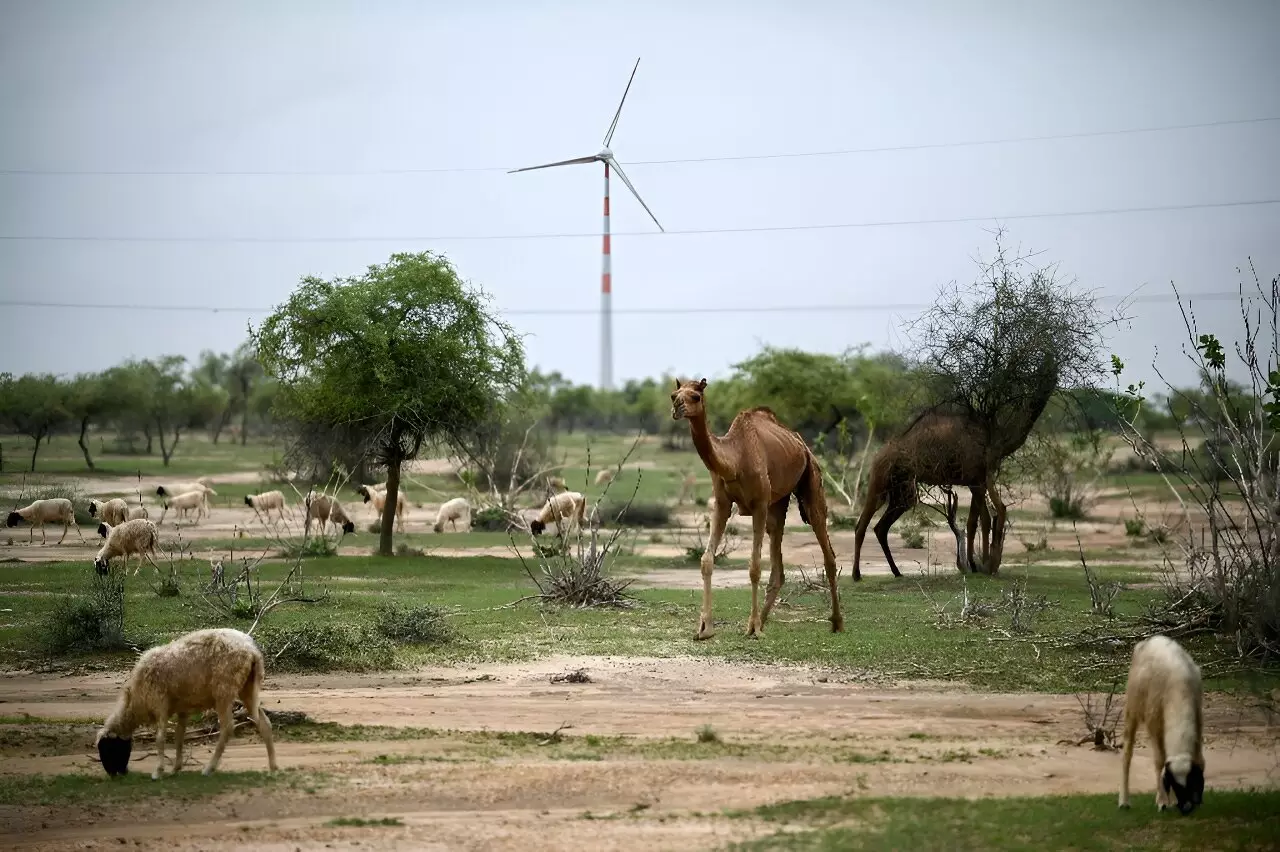As the world grapples with the pressing need for renewable energy, nations like India are making significant strides toward becoming more sustainable. However, this transformation comes with a hidden cost, particularly in regions like the Thar Desert in Rajasthan. The development of wind energy infrastructure, while aimed at reducing carbon emissions, has placed tremendous strain on local communities. Those who live in the shadows of the towering wind turbines are left grappling with lost livelihoods, damaged lands, and a diminishment of their cultural heritage.
The contradiction is stark: industries are expanding their renewable energy capacities to combat climate change, while the very communities that are meant to benefit from these advancements find themselves marginalized. For livestock herders such as Nena Ram, the installation of these windmills disrupts traditional agricultural practices that have sustained their families for generations. The irony lies in the fact that the communities are already reeling from the effects of climate change; harsh droughts and oppressive heatwaves have ravaged their resources, only to be compounded by the environmental and social upheaval caused by the construction of these renewable energy facilities.
In Rajasthan’s Jaisalmer district, the ground-level effects of wind energy projects are palpable. The rise of wind farms has inevitably led to a reduction in grazing lands, which were once vital for the animals that contribute to local economies. Farmers like Jitendra Kumar express despair over how these developments have altered the landscape for the worse. With minimal compensation for land lost to wind energy projects, rural livelihoods suffer as milk production declines and traditional grazing practices become increasingly untenable.
Moreover, the ecological implications are severe. The desert is not a barren wilderness but a delicate ecosystem that harbors rare species, including the critically endangered Great Indian Bustard. Renewable energy infrastructure is often seen as an assault on this biodiversity. Power lines and construction processes disrupt the migratory paths and habitats necessary for the survival of local wildlife. Activists argue that the overwhelming focus on renewable energy overlooks the importance of preserving these natural habitats, thereby creating a disastrous trade-off between generating green power and maintaining biodiversity.
While large conglomerates like the Adani Group and Suzlon tout their contributions to local communities—promising support for health, education, and sustainable development—these assurances often lack substance in the eyes of the villagers. Critics argue that the supposed benefits never equate to the lost grazing lands and reduced agricultural output. Villagers contend that the promises made by these corporations are mere platitudes that fail to address the immediate and tangible issues they face.
Furthermore, there is a growing sense of disenfranchisement among residents. As wind power is sent to urban centers and industrial hubs, locals find themselves in a persistent state of darkness, grappling with frequent power cuts that can last for days. Instead of enjoying the lights powered by the wind farms within their community, they find themselves living in conditions reminiscent of a bygone era, void of modern conveniences while the power generated continues to fill the grid elsewhere.
The scenario unfolding in Rajasthan’s Thar Desert serves as a critical case study in the complex dynamics of renewable energy development. As India aims for 500 gigawatts of non-fossil fuel power by 2030, it is essential to recognize that a mere emphasis on generation capacity cannot ignore the concomitant social and environmental ramifications.
A more holistic approach is needed—one that includes the voices and needs of local communities in the planning and implementation of renewable energy projects. This may encompass fair compensation for land loss, a commitment to preserving biodiversity, and increased transparency about the benefits that can flow to the communities that bear the costs of energy production.
The challenge lies not just in harnessing energy from the wind but in ensuring that this transition is equitable. The residents of Rajasthan’s Thar Desert deserve a stake in the future of their lands without sacrificing their livelihoods or cultural identity. Only then can the narrative of renewable energy be reframed into a more just and inclusive one that benefits all.


Leave a Reply